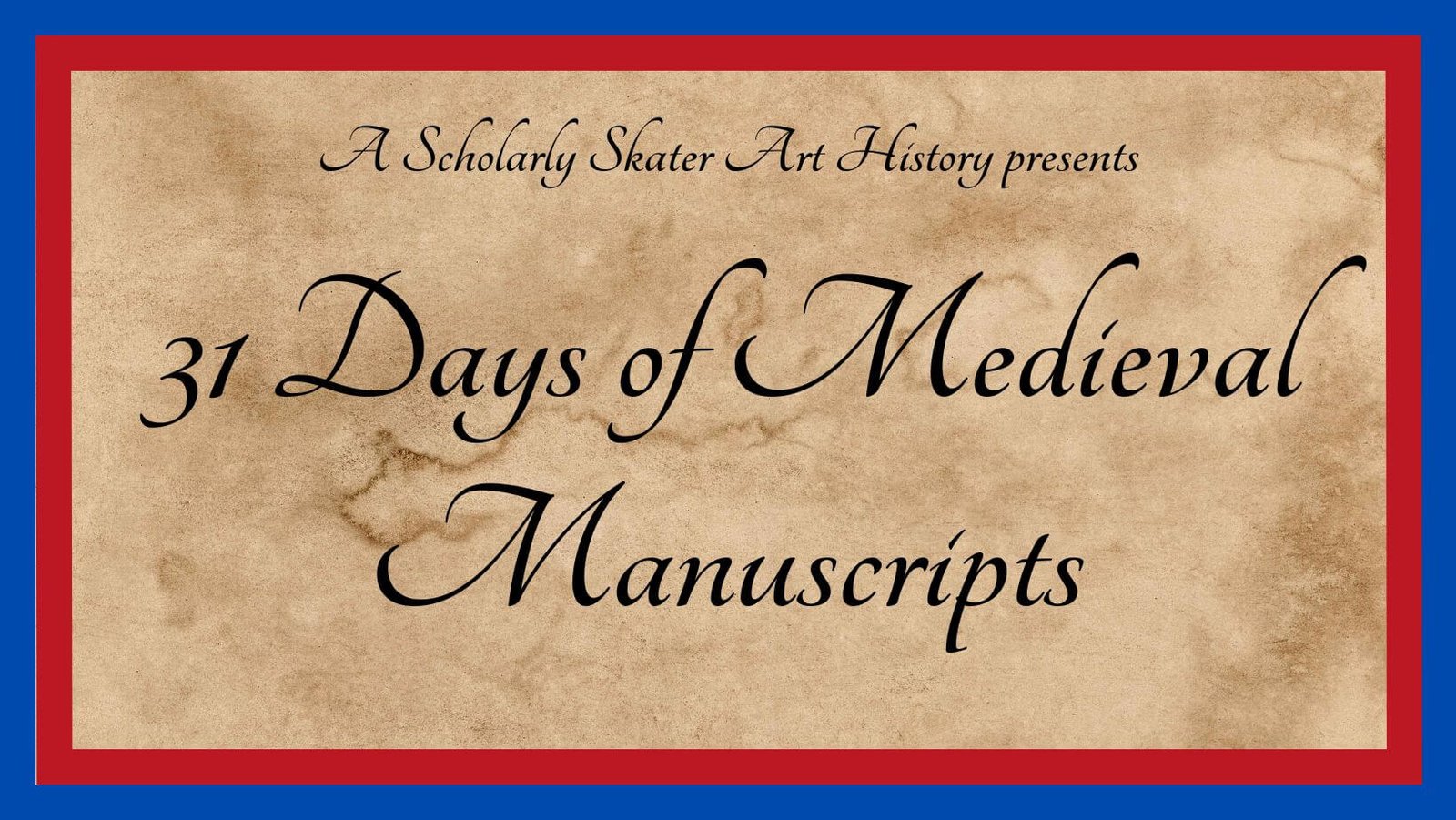Welcome to 31 Days of Medieval Manuscripts, a month-long series introducing the fascinating and brilliant world of medieval illuminated manuscripts.
31 Days of Medieval Manuscripts is a series I wrote in October 2015 as part of my participation in a 31-day bogging challenge. Participants were encouraged to select a specific topic to focus on during the challenge, and I chose medieval manuscripts – a topic I love and studied extensively in college. Every day, I featured selections from one or more manuscripts and also briefly discussed relevant aspects of manuscript history. These posts have proved popular long after the end of the challenge, so throughout October 2023, I am refreshing and updating each post with new images and better information. After all, I’ve learned a lot more about both writing and manuscripts in the past eight years.
Below are the links to each day’s post. I will continue to update as the month progresses, so that the post associated with each day is ready by the time that day occurs but not necessarily before that. Enjoy!
Recommended Reading
- Learn how medieval manuscripts were created: The British Library Guide to Manuscript Illumination: History and Techniques (University of Toronto Press, 2001) or Making Medieval Manuscripts (Bodleian Library, University of Oxford, 2018). This was the main textbook for the course on illuminated manuscripts I took in college. It is divided into sections by types of manuscripts and their owners – “Books for Students”, “Books for Priests”, etc. The text is highly informative, but if nothing else, enjoy it for its large and colorful illustrations of some of the world’s most beautiful illuminated manuscripts. Also, you can never go wrong with a Phaidon art history book.
- Sample the wide variety of manuscripts out there: A History of Illuminated Manuscripts (Phaidon, first published 1997).
- Fun reading about some of the world’s most treasured manuscripts: Meetings with Remarkable Manuscripts (Penguin Press, 2017).
- Discover digitized medieval manuscripts to enjoy online through DMMapp.



